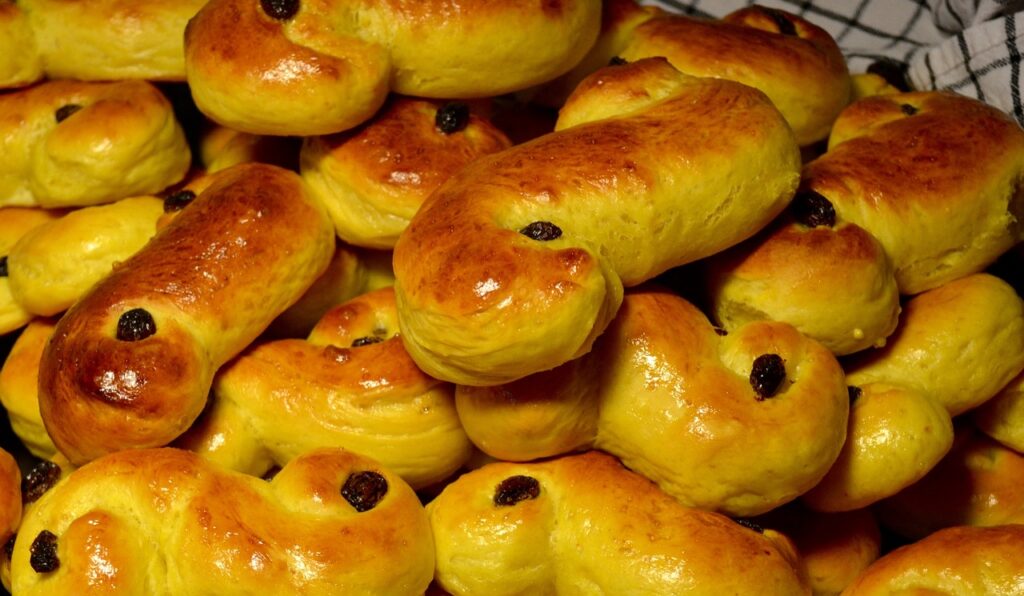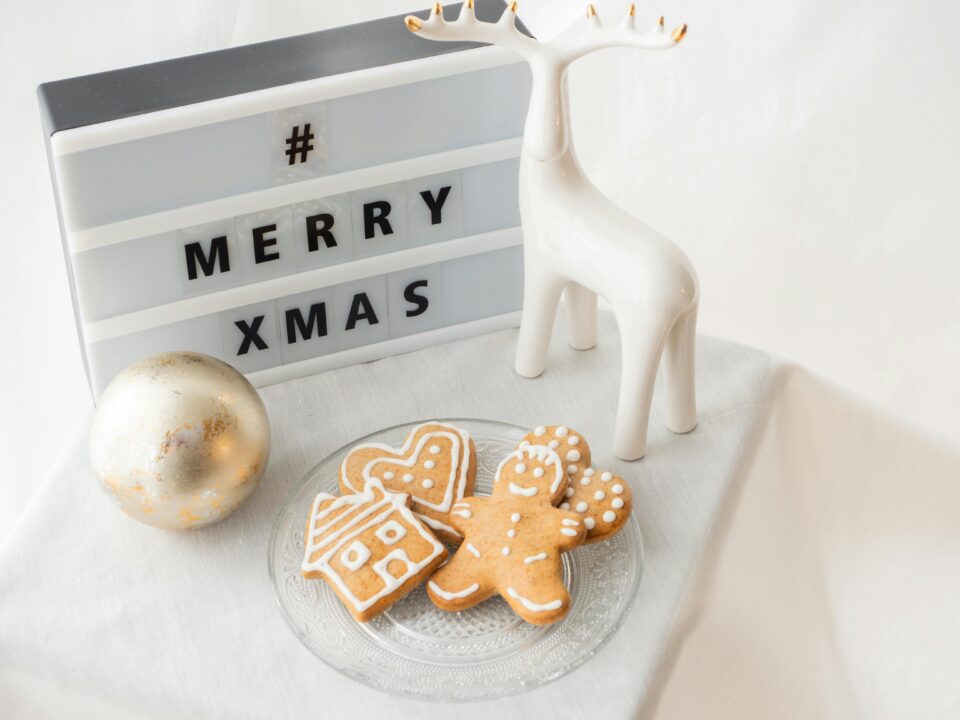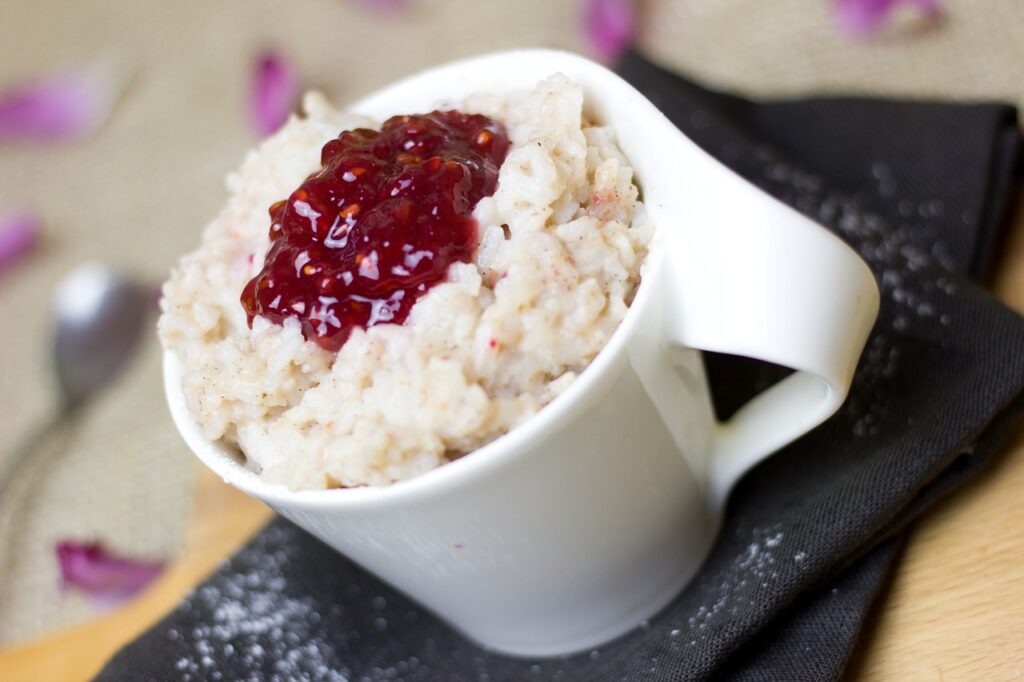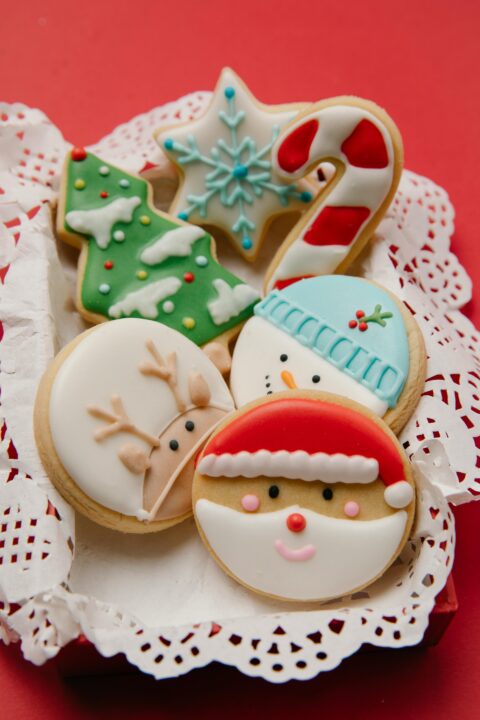Swedish desserts are a staple of the holiday season, full of warmth, tradition and tastes that capture the essence of the celebrations. Swedish Christmas is filled with sweet delicacies, which play a major role in the many delectable customs that surround Swedish Christmas. On a julbord (Christmas meal), you could find the following well-prepared Swedish desserts in the meal table:
Swedish Desserts for Christmas
1. Lussekatter (Saffron Buns)

One of the Swedish desserts for Christmas is Lussekatter, also known as Lucia or saffron buns. These yellow buns with saffron infusion serve as a representation of Lucia saffron buns, a classic Swedish holiday treat.
They taste sweet and doughy and are typically sweetened with raisins. Lussekatter, sometimes referred to as Lucia buns or saffron buns, are sweet buns with saffron flavor that are typically consumed on December 13th, Lucia Day.
These buns frequently have a “S” or figure-eight shape, which represents the sun’s rays or a cat’s curls. To add to their festive charm, lussekatter are embellished with raisins, which are either positioned in the center of each bun or arranged in beautiful patterns.
2. Pepparkakor (Gingerbread cookies)

This Swedish Christmas desert is called pepparkakor or gingerbread cookies or snaps. These cookies are a traditional Christmas dessert in Sweden. They taste strongly like ginger and are thin and crunchy.
Traditionally, pepparkakor are sliced into joyful designs like pigs, stars, and hearts. Pepparkakor (Ginger Snaps) is a combination of ginger, cloves, cinnamon and occasionally cardamom flavor or spice. It is a crisp ginger biscuit. To add even more festive appeal, these cookies are frequently also cut into shapes such as hearts, stars and animals and then adorned with white icing.
In addition to being delicious, pepparkakor is a traditional Christmas treat in Sweden. It is typically consumed with a cup of glögg, a spiced mulled wine. They are ginger snaps that are scented with spices like ginger, cinnamon and others and are frequently sliced into festive shapes and consumed as deserts during the Christmas holidays.
3. Risgrynsgröt (Rice pudding)

This is another traditional Swedish Christmas dessert. In Sweden, this rich rice pudding is a favorite Christmas dish. Typically, rice, milk, sugar and cinnamon are used to make it. There’s a solitary almond concealed in the pudding and the first person to locate it will have good fortune the next year.
Risgrynsgröt desert is a cinnamon-infused, creamy rice pudding that’s typically accompanied by a sweet berry sauce. It is a classic Swedish rice pudding prepared with milk, sugar and short-grain rice; cinnamon is frequently added for flavor. It’s prepared in such a way that it is heated gently until it becomes thick and creamy, resulting in a satisfying and decadent dessert. It’s a sweet berry sauce, usually made from lingonberries or cherries and it’s often served warm over risgrynsgröt to provide a tart contrast to the creamy pudding.
4. Klenäter (Fried Pastries)
Every Swedish Christmas dessert isn’t complete without Fried pastries, or klenäter. These are pastries that are deep-fried and resemble funnel cakes. They can be served with whipped cream or jam after being sprinkled with powdered sugar.
It’s a Swedish Christmas treat called Klenäter, or fried pastries. Klenäter, which are deep-fried pastries, are part of the traditional Swedish Christmas dessert spread. Klenäter is a customary, albeit rarely found, Christmas holiday delight.
Klenäter are funnel cake-like deep-fried pastries. They are formed from a dough that has been flavored with cognac and lemon peel. The dough is then twisted into different forms and deep-fried till golden brown. After cooking, they are usually finished with a sweet and delicious dusting of cinnamon and powdered sugar.
5. Desserts with fruit
This Swedish Christmas dessert commonly consists of fruits like apples, pears and plums. They can be added to fruit salads, baked into pies or crumbles or enjoyed raw. Some of these Swedish Christmas desserts with fruits are explained below:
- Fruktkaka (Swedish Fruitcake): The Swedish fruitcake is lighter and crumblier than the dense and occasionally inebriated fruitcakes of North America. It is loaded with dried fruits, such as cranberries, cherries and raisins and for added flavor, chopped almonds and citrus peel are frequently included.
- Apple Crumble Dippers: This traditional Swedish delicacy has layers of apple slices, a crumbly, sweet oat topping and a hint of cinnamon. The topping is cooked until golden brown and the apples are soft. A dollop of vanilla ice cream or whipped cream is typically served warm alongside apple crisps.
- Punschrulle (Rum Roll): This celebratory treat consists of a rolled cake stuffed with a rum-flavored custard or whipped cream filling, which frequently has strawberry or raspberry jam or preserves mixed in. After that, powdered sugar is sprinkled over the cake to create a lovely presentation.
- Glögg (Mulled Wine With Spices): Glögg is a warm, spiced wine beverage that is typically offered during the Swedish Christmas season, although it is not a dessert per se. It is sometimes consumed with biscuits or gingerbread cookies; other variations include the addition of fruits like almonds and raisins.
6. Julgodis (Christmas Candy)
An essential component of the Swedish Christmas dessert table is julgodis, or Christmas candies. A lovely display of different candies and chocolates is customarily served as a charming conclusion to the julbord (Christmas table) feast.
Various candies and chocolates are also well enjoyed in Sweden at Christmas time as deserts. Traditional julgodis include hard toffee (knäck), marzipan pigs, and koloriserad choklad (colored chocolate). These popular Julgodis snacks that add to the festive mood include the following:
- Ischoklad (Ice Chocolate): Without Ischoklad, a Swedish Christmas isn’t complete! It goes well with knäck, or Swedish toffee. There are several variations on the basic recipe, which is just chocolate and coconut butter. Some folks add a little liquor or citrus taste to theirs for an added kick.
- Swedish Toffee, or Knäck: This is another classic julgodis toffee, thick and buttery. It is available in a variety of flavors, the most popular being hazelnut and vanilla. Knäck can be used to make various desserts or eaten on its own.
- Koloriserad Choklad (Colored Chocolate): This is a fun addition to the julgodis spread. These colorful, bite-sized chocolates come in a variety of forms and hues. They can be filled with a variety of creams or nuts and are prepared with milk chocolate.
- Marzipan Pigs: This Swedish dessert is made from sugar and almond flour. Marzipan is a sweet dough. It is frequently shaped like pigs, which are a traditional Swedish emblem of wealth and good fortune. Marzipan pigs might have eyes and a curly tail, or they can be plain and come in different sizes.
7. Saffransbröd (Saffron Bread)
Sweet bread flavored with saffron and usually braided or formed like buns is called safffransbröd and is one of the Swedish Christmas desserts. Saffron’s vibrant yellow hue lends the bread a celebratory look and its subtle flavor provides the holiday table with a special touch.
Almonds, raisins or currants can be added to saffron bröd to enhance its flavor and give each bite more texture and sweetness. Saffransbröd, a sweet bread flavored with saffron and frequently fashioned into buns or braids, are mostly made with almond or raisin filling.
7. Knäck (Swedish Toffee)
Knäck is a traditional Swedish toffee prepared by heating sugar, syrup and cream until they turn golden and caramelize. The toffee’s creamy, buttery flavor is enhanced by the addition of vanilla or on rare occasions, a trace of sea salt. Knäck is easily consumed as a sweet treat throughout the holiday season since it is usually shaped into bite-sized sweets or poured into tiny paper cups. Knäck is a classic Swedish toffee consisting of sugar, syrup, and cream; it’s frequently flavored with vanilla or, on rare occasions, a hint of sea salt.
Is Swedish Christmas Desserts, a Tradition still Practiced Till Date?
The big answer to this question is absolutely Yes! Swedish Christmas desserts are a beloved custom that is still followed today. The Swedish Christmas celebration revolves around the julbord or Christmas table and a spread of sweets is still a fun way to end the meal.
Swedish Christmas Desserts and treats remain a prominent tradition till date for the following reasons below:
1. Cultural Importance
Traditions around food are very important and Christmas desserts are particularly important in Swedish celebrations. They stand for spending time with family, being together and indulging in delectable food. It’s always a time for reunion and get together.
2. Generational Transmission
Recipes and baking methods for these delicacies are frequently handed down through families.
3. Evolution and Adaptation
New options are added to accommodate shifting dietary requirements and preferences, even though some classic desserts, like Klenäter, may be less popular today. Savoring a range of delicious delicacies on the julbord is still a fundamental custom.
4. Sense of Nostalgia
These sweets’ flavors and fragrances have the power to stir up fond recollections of previous Christmases.
5. Commercial Availability
Traditional Christmas sweets from Sweden are widely accessible in Swedish stores, facilitating the continuation of the custom for families without requiring elaborate, handcrafted preparations.
Let’s look below the examples of Swedish Christmas desserts continued Practices
- Julgodis (Christmas candies): A traditional feature of Swedish Christmas dinners is the colorful array of julgodis, which includes everything from colored chocolate to marzipan pigs.
- Lussekatter (Saffron buns): A popular treat in the weeks preceding Christmas as well as on Christmas Eve, these buns are laced with saffron.
- Baking Traditions: Making new memories and transferring recipes is a custom that many families still hold dear. It also allows them to bake their own Christmas delicacies.
Swedish Christmas desserts are a delectable and timeless custom that infuses happiness and a celebratory vibe into the holiday season till date.
Conclusion
In summary, these delectable Swedish Christmas desserts do not only showcase the nation’s rich culinary legacy but also its cultural customs, adding coziness and happiness to celebrations with loved ones.
Throughout the holiday season, especially during the joyous Christmas celebrations, these delights are frequently indulged in.
Of course! Christmas time Swedish desserts are a staple of the holiday season, full of warmth, tradition, and tastes that capture the essence of the celebrations.



